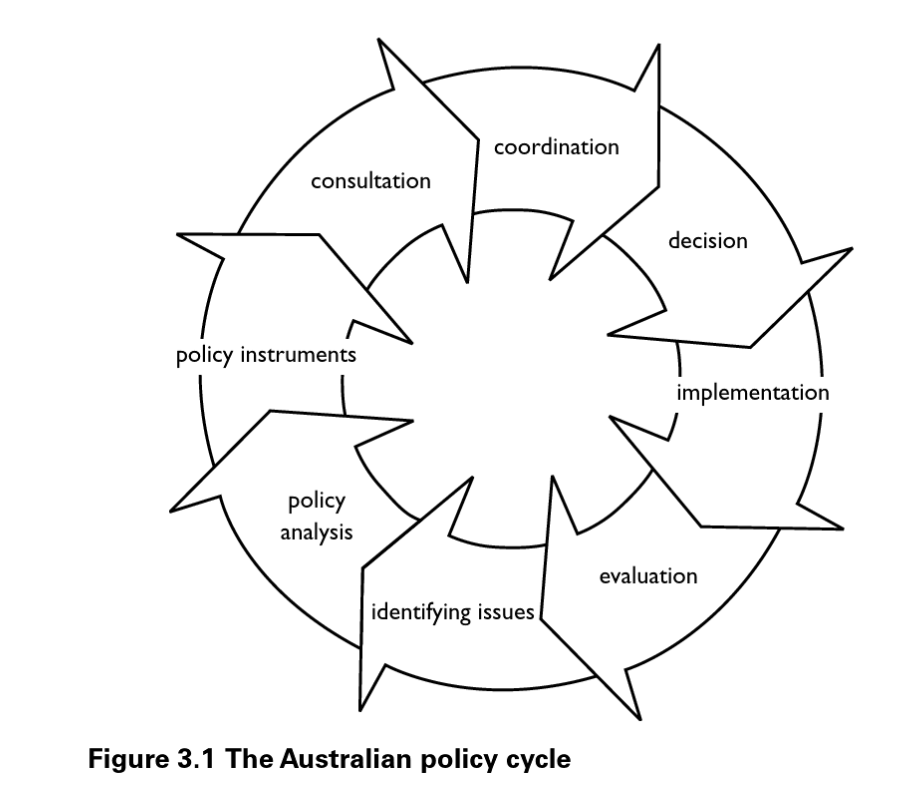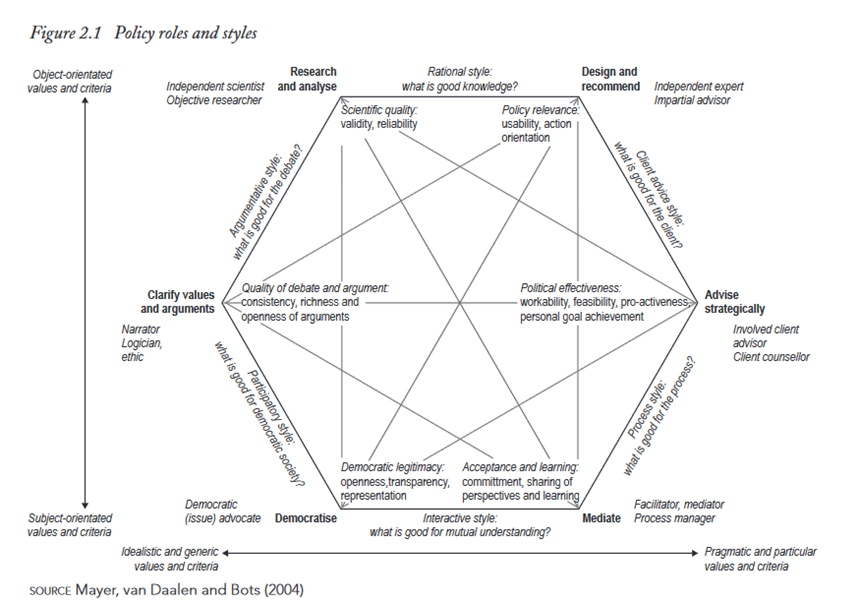TOPIC 4.2: Government Policy Units – What do they do?
Policy services generally include:
- Policy advice, coordination and cabinet support services
- Government and executive support services
- Legislative drafting and e-publishing.
An overview of the diverse aspects of policy work is provided in The Australian Policy Handbook. The diagrammatic ‘Policy Cycle’ provides a stylised circular view of the policy process. Policy practitioners may work in particular areas of policy work or may undertake projects, which include all aspects of the policy cycle.
The ‘Policy Cycle’, from The Australian Policy Handbook (Althaus 2012, p52)[1], provides insight into policy services:

The system within which policy is developed is complex and contested. The policy cycle in practice is iterative and discontinuous. Diverse stakeholders interact in diverse ways to influence policy development and implementation processes.
The diversity of policy roles are illustrated in the Policy Hexagon (Mayer, Van Daalen and Bots, 2004)[2].

To help us understand the complex and sometimes chaotic environments within which policy evolves, we will explore:
- Policy communities
- Policy problems
- Participation processes
- Evidence based policy
- Accountability models

